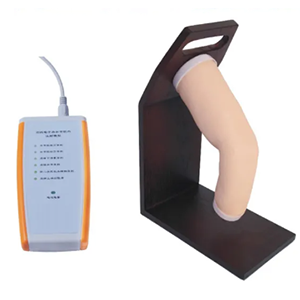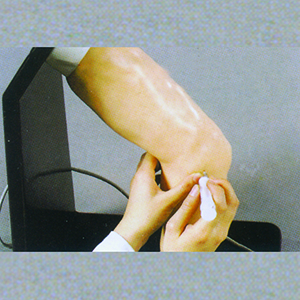

Article tag: Elbow injection model| BIX-CK20134| Medical clinical model|
As an innovative training tool, the elbow injection model has become an integral part of medical training. It not only helps doctors improve their accuracy, but also provides the opportunity for repeated practice in a risk-free environment, reducing errors in clinical practice. Experts and data have shown that by training this model, doctors can be more c...
Intracavitary injection of the elbow is a key technique in many clinical treatments, especially in the treatment of arthritis, elbow injury and related diseases. Doctors mastering this skill can not only improve the effectiveness of treatment, but also reduce the pain of patients. However, learning the elbow injection technique is not easy, and it requires doctors to accurately determine the location of blood vessels, nerves and other tissue structures. With the continuous advancement of training equipment, the application of elbow injection models has become an important part of medical education, providing strong support for the personal growth of physicians. Here's an analysis of how the model can help doctors pinpoint injection techniques.
1. Personal growth and technical improvement

In medical education, especially for skills that require a high degree of precision, traditional classroom teaching methods are often difficult to adequately impart to students or physicians. Through the training of the elbow injection model, doctors can practice repeatedly in a simulated environment and gradually improve their skills.
- Skill proficiency: Through model simulation, the doctor can repeatedly practice the injection technique of the elbow joint, whether it is simple liquid injection or more complex drug injection, thereby improving the proficiency and precision of the operation. Simulation training can help doctors master the correct manipulation, including the Angle and depth of the needle and the speed of the injection.
- Reduce clinical errors: In the absence of a model, the doctor may need to operate directly on the patient, which may lead to errors due to tension or improper operation. Through repeated training, doctors are able to be more confident in dealing with real patients, thus reducing operational errors.
2. The role of training equipment
As a kind of high-quality training equipment, the elbow injection model simulates the real elbow anatomy and helps the medical staff to better master the injection operation. The advantages of this device are:
- Realistic: A highly simulated intracavity injection model of the elbow can provide close to real patient anatomy, including blood vessels, muscles and joints. This allows doctors to simulate the injection process without risk.
- Operational feedback: Many elbow injection models also have a feedback mechanism to simulate whether the puncture is successful or whether resistance is encountered during the injection, which can help the doctor adjust his or her technique in a timely manner.
3. Industry expert views

Industry experts generally agree that the importance of simulation training equipment in improving doctors' skills cannot be ignored. Experts say that elbow injection technology is a complex skill, and the success rate of doctors in clinical operation is often directly related to the quality of training. Experts recommend the use of professional training equipment for repeated training, and make targeted adjustments according to personal progress.
- Professional support: Experts emphasize that the use of the elbow injection model not only helps to improve the accuracy of the operation, but also enhances the ability to adapt to different clinical situations. Through a customized training program, doctors are able to deal with multiple complex situations in a simulated environment, laying a solid foundation for future clinical operations.
- Personalized feedback: Experts also mentioned that with the development of technology, more and more elbow injection models have adopted intelligent feedback systems, which can give immediate feedback according to the doctor's operation, so as to help doctors improve their skills more targeted.
4. Data support
According to the data analysis, doctors who trained with the elbow-joint injection model had significantly improved success rates in practice. One study showed that with simulated training, doctors improved the success rate of intra elbow injections by about 30%. In addition, model training reduces the time it takes doctors to go from beginner to proficient.
Training effect: Studies have shown that by repeatedly using the elbow injection model training, the accuracy and fluency of the doctor in completing the injection have been greatly improved. The data also showed that doctors trained with the model improved their resilience and operational confidence in the face of complex cases.
Skills assessment: Some clinical training institutions and hospitals have begun to collect data to assess the actual impact of simulation training on the skills improvement of healthcare workers. The data showed that doctors who trained with the model on a regular basis improved their operational accuracy by more than 40 percent in the actual clinic.
Sum up
As an innovative training tool, the elbow injection model has become an integral part of medical training. It not only helps doctors improve their accuracy, but also provides the opportunity for repeated practice in a risk-free environment, reducing errors in clinical practice. Experts and data have shown that by training this model, doctors can be more confident and accurate when facing complex elbow injections. With the continuous advancement of technology, the application of the elbow injection model will be further expanded and become a standard configuration in medical education and training, providing strong support for the personal growth and skills improvement of physicians.